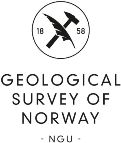

|
Norsk versjon | ||||
| THE INDUSTRIAL MINERAL DATABASE | |||||
| Deposit Area 1841 - 301 | |||||
| (Last updated 24.nov.2006) | |||||
Name of Deposit Area : Klungsetvika |
| (Object Id : 1841,301,00,00) |
| Location |
| County : | Nordland (18) | Municipality : | Fauske (1841) |
| Map 1:50000: | Fauske (2129-4) | Map 1:250000: | Sulitjelma |
| Marking point: | Longitude: | 15.2666780 | Latitude: | 67.2672720 |
| EU89-UTM Zone 33 | (Coordinates IS confirmed) |
| X-coord: | 511499 m. | Y-coord: | 7461200 m. |
|
|
| Commodity |
| Main Type: | Silica | Sub Type: | Quartzite |
| Importance |
| Public: | Little Importance (reg. 18.02.2015) |
| Economical: | Minor interest , (Confirmed 13.jul.2004 by Jan Egil Wanvik) |
Products |
| Element/product | Crude ore grade or quality | |
| QUAZIT | % |
Mineralization |
| Era: | Paleozoic | Period: | Cambrian | |
| Dating: | Method: | |||
| Genesis: | Sedimentary deposit | Form: | Layer | |
| Main texture: | Min. distribution: | Massive (>50 % ore minerals) |
| Main grain size: |
| Strike/Dip: | 220 / 30 | Direction: | ||
| Plunge: |
| Stratigraphic classification of host rock |
| Era: | Paleozoic | Period: | Cambrian |
| Province: | ||
| Geotec.unit: | ||
| Tectonic complex: | ||
| Igneous complex: |
| Group: | Holstadgruppen | Formation: |
Mineralogy |
| Relationship | Mineral | Amount | |
| Not defined | Quartz | Major mineral (>10%) | |
| Not defined | Muscovite | Subordinate mineral (1-10%) |
Information(s) in free text format |
| Free text |
| En kvartsittbenk som skjærer riksvegen (Fauske-Bodø) ved Tørresvik litt vest for stedet Klungset. Kvartsitten ligger på vestsiden og parallelt med Fauskegruppens konglomerathorisonter. Mektigheten i vegskjæringen er på ca 27 m. Hengbergart er kvartsglimmerskifer, liggbergart er en veksling mellom kvartsitt og 4-40 cm tykke skifersoner. Johs Færden prøvetok i 1954 den reneste 5 m mektighet av kvatsitten som viste 96% SiO2. Kvartsitten er i våre dager alt for uren til industriell anvendelse. Den inneholder alt for mye glimmer og skiferhorisonter. |
Bibliography: |
| From NGU's Reference Archive: |
| Rekstad, J. , 1929 |
| Salta. Beskrivelse til det geologiske generalkart. |
| ;Norges geologiske undersøkelse;KARTBESKRIVELSE; TIDSSKRIFTARTIKKEL;NGU; No.134;1-73 + ka pages |
| Abstract: | |
| Of eruptive rocks granite is predominating. More subordinate gabbro rock and at some places perdotite occur. The stratified rocks are schists, limestone and gneiss with a few sections of slaty quartz rock. In the coast district there is a belt of schistose rocks from Gildeskaal northward to Folda and Steigen. In Beiarn and Misvær there is a great area of granite, which from here continues to Saltfjord and Skjerstadfjord. North of these fjords it reappears and now continues to Folda. Here it is, in places, so strongly compressed that it has the appearance of gneiss. In the inner part of Beiarfjord there is an area of limestone and schist, which is strongly penetrated by dikes from the granite field. East of the granite there is a large field of mica-schist with great sections of limestone and marble. It enters the southern part of the map at Misvær and Saltdalen and continues over Valnesfjord and Fauskeidet northward to the inner part of Folda. In the southeastern part the Sulitjelma field is located. Here the schistose-rocks are penetrated by considerable quantities of gabbro-rock and smaller sections of granite. The main area of gabbro is found in the Sulitjelma peaks, which are located east of the map. The granite within the range of the map is pressed out in a liquid state as laccolitic masses. |
| Rekstad, J. , 1917 |
| IV. Fjeldstrøket Fauske-Junkerdalen |
| ;Norges geologiske undersøkelse;TIDSSKRIFTARTIKKEL;NGU; No.81;70 pages |
| Abstract: | |
| The region here described is situated in Northern Norway between the inner parts of the Saltenfjord and the Swedish frontier. The land is filled with high mountains of which a great many rise above the snow line. This is here about 1100-1200 m above sea level. The igneous rocks of the region are granite, gabbro, amphibolite, peridotite and serpentine. Of these the granite occupies the largest area. It is a greyish white to faintly reddish rock, which for the most part is schistose and shows cataclastic structures. The mountains of Sulitjelma consist of olivine-gabbro and of amphibole-rocks. more to the south many injections of gabbro and of schistose amphibolite occur in the stratified rocks. The greater part of these are of minor extent. In Raufjeld and at Valnesfjordvatn there are small occurrences of serpentine. Of the stratified rocks mica-schist, limestone and marble cover a large part of the area. The mica-schist contains commonly brown garnets, and in some places it also contains brown staurolite. Much of the mica-schist contains limecarbonate and passes partially into calcareous schist and limestone. Great masses of crystalline limestone and marble occur in Fauske, at Salten- fjord and in Saltdalen. |
| References not to be found in NGU's Reference Archive.: |
| Færden, J. 1954. Bergarkivrapport 5330. |
| The fact sheet was created on 22.11.2024 |
| Questions or comments regarding the fact sheet can be emailed to: ressursdatabaser@ngu.no |
| Copyright © 2024 Geological Survey of Norway |